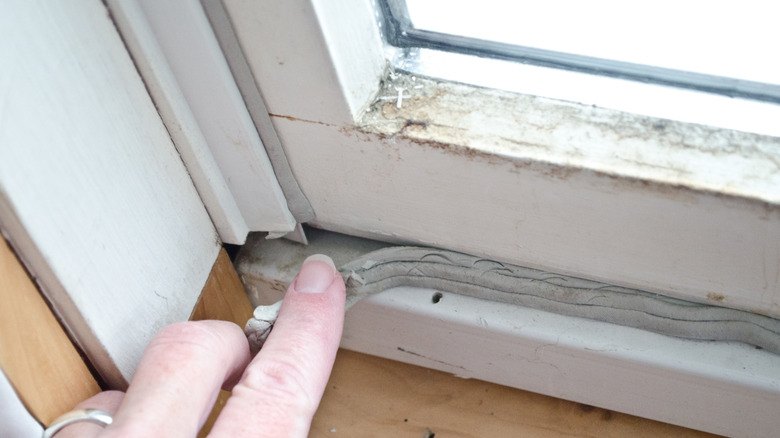Heating Your Home Can Get Expensive - Here's The Best Time Of Day To Turn It On To Save Money
For much of the country, cool autumn weather has taken hold, and winter is right around the corner. Your mind may be consumed with thoughts of turkey and festive decorations, but many of us have to juggle higher heating bills along with our winter celebrations. According to the U.S. Energy Information Administration, part of the U.S. Department of Energy, heating our living spaces accounts for more than 40% of residential energy consumption. It costs us more to stay warm than it does to run the air conditioning or power all of our appliances and electronics.
If you were hoping for relief this winter as grocery bills soar, well, we have bad news for you. According to the National Energy Assistance Directors Association, home heating costs are expected to surge by more than 7% on average, outpacing inflation. And homes that heat with electricity are expected to be hit the hardest. This can be a tough message to hear when people are already struggling, and many areas of the U.S. are bracing for a colder-than-average winter. To help keep the heating bill down, you should learn when and how to adjust your thermostat. Many of us likely turn down our heat at night or when we're not home, but there are other tricks that will help you maximize your energy savings.
When is the best time to turn on your heating?
Your heating schedule partly depends on what type of heating your home uses. If you don't have a heat pump, the U.S. Department of Energy advises that allowing your indoor temperature to fluctuate by seven to 10 degrees could save you up to 10% on your energy bills. For example, set your temperature to 63 at night and 70 during the day. Or, if you spend most of the day outside of your home, you can adjust your thermostat to keep it cooler when you're at work. This method is not advisable if you have a heat pump system, which likely uses an expensive backup electrical system if the temperature drops too low. If you have a heat pump, you should only drop the temperature a few degrees at night or when you're away.
Most resources recommend turning up your heat about 30 minutes to an hour before you get out of bed so your home isn't too chilly as you prepare for the day. If your house is empty during the day, you can lower the heat again while you're away. Then, once you get home, give the heat a boost until you go to bed, when you can drop the temperature once you're nice and cozy under a blanket. A programmable or smart thermostat is a great way to easily adjust your heat multiple times a day, because you can set it and forget it.
Additional tips to keep you warm
Many Americans live in regions where temperatures can drop below freezing much of the year, especially at night. Don't completely turn off your heating, even if you won't be home for an extended period of time, because water could freeze in your pipes and cause them to burst. Programmable thermostats are a good option to help control your home's temperature, but they aren't recommended if you have a heat pump. That being said, if you really like the idea of a modern thermostat, you can buy programmable ones made especially for heat pump systems. If you have another type of heating system and upgrade to a smart thermostat, make sure you're using it properly and it's not making your home less efficient.
There are other tricks to saving on your heating bill, other than layering up or investing in blankets. Opening blinds or curtains to let the sun in, even on cold days, will help warm your home, and you can close off unused rooms to keep the heat where you need it most. If you've used your oven, prop the door open after you've shut it off to put that excess heat to good use. That ceiling fan that helps keep you cool in the summer? You may not realize it, but running it in the opposite direction will push the warm air down into your living space. Finally, check the seals around your doors and windows to make sure they aren't letting in a draft.


